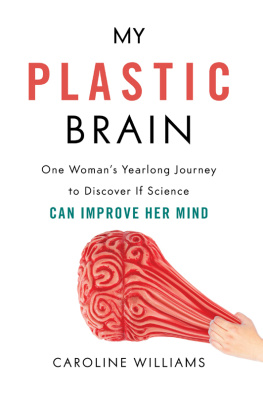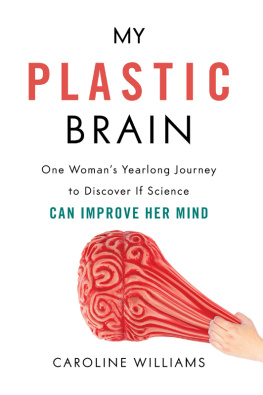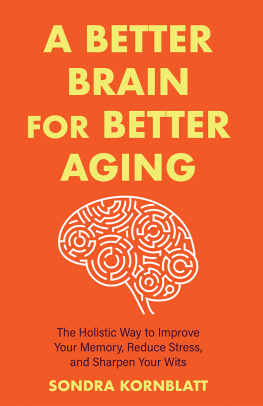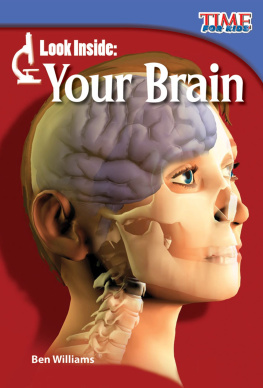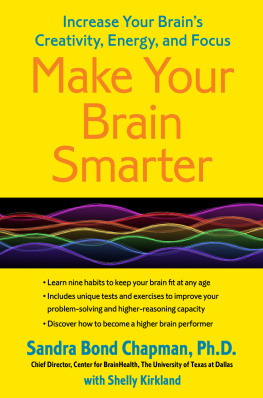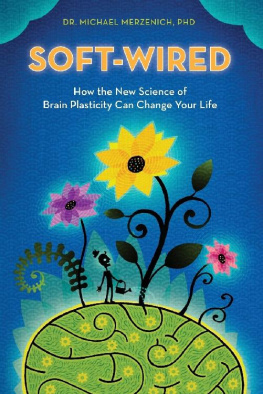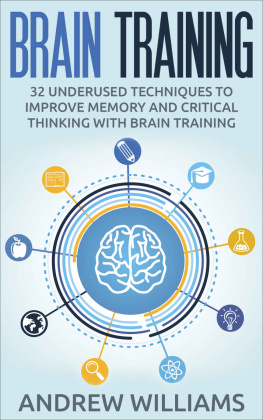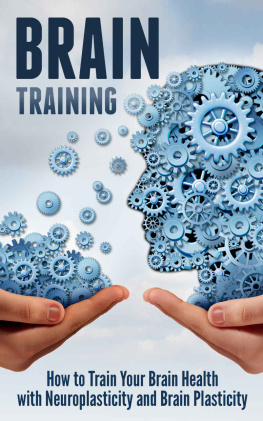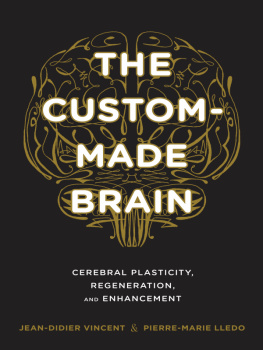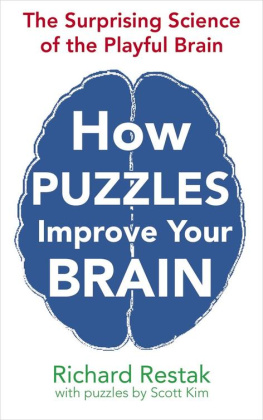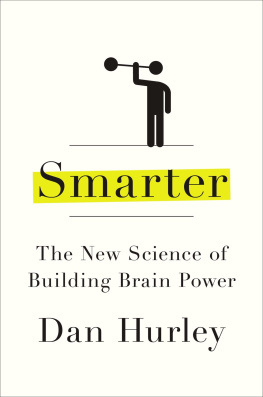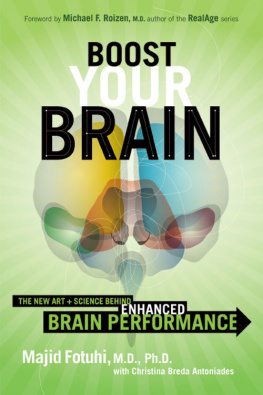
OVERRIDE
Caroline Williams is a science journalist and editor. A feature editor and regular contributor to New Scientist , her written work has also appeared in The Guardian , BBC Future, and BBC Earth, among others. She has worked as a radio producer and reporter for BBC Radio, and was the regular co-host of the New Scientist podcast from 2006 to 2010. She is editor of the New Scientist Instant Expert Guide to the Brain (John Murray, 2016). She holds a BSc in biological sciences from Exeter University and an MSc (Distinction) in science communication from Imperial College London. She lives in Surrey, UK.
For Jon and Sam, with love.
Scribe Publications
1820 Edward St, Brunswick, Victoria 3056, Australia
2 John Street, Clerkenwell, London, WC1N 2ES, United Kingdom
First published by Scribe 2017
Copyright Caroline Williams 2017
All rights reserved. Without limiting the rights under copyright reserved above, no part of this publication may be reproduced, stored in or introduced into a retrieval system, or transmitted, in any form or by any means (electronic, mechanical, photocopying, recording or otherwise) without the prior written permission of the publishers of this book.
9781925321906 (ANZ edition)
9781925228984 (UK edition)
9781925307931 (e-book)
A CiP record for this title is available from the National Library of Australia
scribepublications.com.au
scribepublications.co.uk
Contents
PART ONE: MEETINGS WITH MY EXECUTIVE CONTROLLER
PART TWO: SPACE AND TIME
PART THREE: A LOGICAL MIND
PART FOUR: WHAT NOW?
Introduction
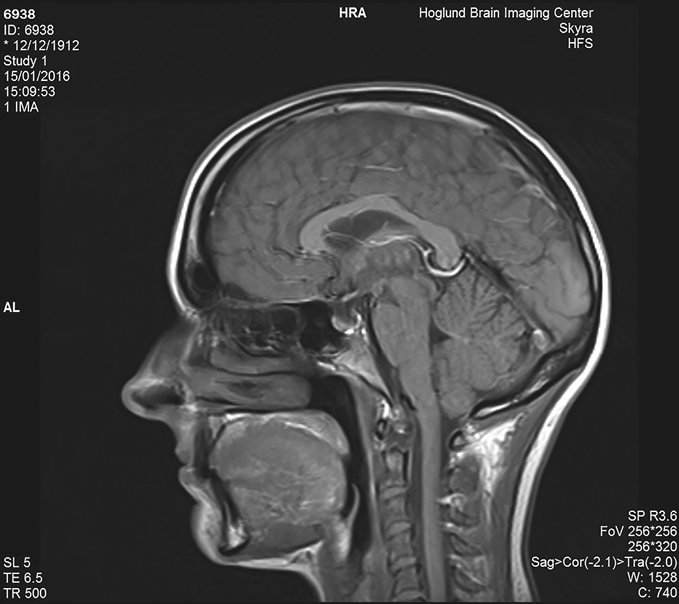
Fig 1. An MRI scan of the authors brain. (Courtesy of the University of Kansas)
Heathrow airport is huge. So if you happen to leave your hand luggage in the departure lounge, and dont notice until you are at gate 21a and the flight is boarding, its quite a long way to run back about a 15-minute round-trip, in fact, although it feels a lot longer when you have just heard a stern announcement that luggage left unattended will be removed and may be destroyed.
Thankfully, my bag was in one piece, and exactly where I left it. I found it in a shop just as the assistant was about to call security, stammered an apology through a dry mouth, and pelted back to the gate in time to catch my flight. It wasnt until Id calmed down, with a stiff gin and tonic in hand, that I realised this sort of mishap was exactly why I was taking this flight in the first place.
I was on my way to Boston, Massachusetts, to meet two neuroscientists who carry out research into sustained focus and attention. My hope was that they would help me find a way to override my natural tendency to be stressed and distracted; to help me replace it with a calm focus that I could sustain for a useful amount of time. It was the first step in a journey that was to last more than a year, and take me back and forth across the US and Europe in search of real-life fixes for my brains shortcomings.
I wanted to apply the best that modern brain science had to offer, and to get a glimpse into the future of real-life brain training. Focus was just the beginning. In the months that followed, I would try science-based interventions for, among other things, a non-existent sense of direction, an unhealthy worrying habit, and some embarrassingly bad number skills. Then I would branch out into some more mysterious corners of the mind, such as creativity and the perception of time.
There are good reasons to think that mine was a journey worth taking. First, there is a decades worth of evidence that the brain is plastic it retains the ability to change physically in response to the things we learn and experience throughout life. As a science journalist and former feature editor at New Scientist magazine, I have, over the years, written tens of thousands of words on so-called neuroplasticity, and as time went on, I became more and more curious about how I might apply this to my own brain.
But when I started looking for answers, what I found was nothing, of any real, practical use. Despite all of the research into the brains awesome powers of plasticity, no one seemed to know exactly what we should be doing to apply the science to everyday life. Sure, there are fascinating tales of people harnessing their brains plasticity to recover from major brain injuries, but to my knowledge there was no such evidence for the average person on the street.
To me, it seemed like a pretty major hole in the assumption that neuroplasticity can be applied by anyone. For a start, injured brains are very different to healthy ones. After a stroke, the brain releases various growth-promoting chemicals at the site of injury to try and repair the damage. The same degree of rewiring may not be possible when there isnt a major roadblock that the brain needs to work around. On the other hand, its hardly surprising that we can learn new skills throughout our whole lives learning and remembering are what brains are designed to do.
With 86 billion neurons, and trillions of connections, an adult brain is a pretty remarkable feat of engineering. By the time it gets to maturity, it has already been on an incredible journey. A large part of the job of the adult brain is to work as a kind of pattern-spotting and generalisation machine whirring away in the background, making sense of what is happening now and how it relates to what has already been stored in memory.
These memories can only come from experience, which is why babies and children come primed to learn, with an endless supply of curiosity about what things are like and why. Once this groundwork is complete, a lot of the day-to-day processing of the brain is done on autopilot, with unconscious processing taking care of working out what is happening and how we should respond. The brain does this for a good reason: unconscious processing is fast and effortless, and leaves plenty of thinking-power free to concentrate on things that need more focus.
The learning process starts surprisingly early: in the last few weeks before birth, a babys brain is hard at work, forming strong memories of its mothers voice and the sounds of the world it will be born into. It also learns from its mothers physical state a high dose of stress hormones from the mother, for example, programmes a babys brain to develop in ways that leave it more reactive to stress in later life. The brain is learning that it needs to be on alert because it is being born into a dangerous world.
In so many ways, what we experience in early life shapes the adult that we will become, deciding which assumptions our brains will make without bothering to inform the consciousness. This, combined with each persons particular genetic inheritance, means that each brain in adulthood is not only totally unique, it got that way more or less by accident: the outcome of a genetic and life-experience lottery.
If neuroplasticity can be applied in adulthood, though, it provides an opportunity to change all that; to take a fresh look at the brain you have ended up with as an adult and decide what to keep and what to change.
There is only one thing that worries me about this process and its something that I admit I hadnt thought of until I was enthusiastically telling a friend about my plans. His reaction wasnt at all what I expected. Stephen, a friend from my yoga class, looked horrified at the very idea of trying to change your brain. But surely you are a unique and wonderful person who isnt like anyone else, he said. Why would you want to change that? It threw me for a while, because its true that my brain, warts and all, is the very thing that makes me me . If I change it, there is always the risk that I wont still be me afterwards.
Next page

